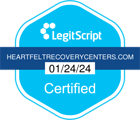Understanding Opioid Withdrawal
Deciding to stop using opioids is a powerful first step, but many people feel unsure about what withdrawal will be like. The symptoms can be uncomfortable and even frightening, especially if it’s your first time going through detox. The good news is that safe treatment makes the process more manageable.
By learning what to expect, from early symptoms to safe ways of managing them, you can feel more prepared for the journey ahead. If you’re still exploring treatment, you may want to read more about opioid addiction treatment in New Hampshire.
What Causes Opioid Withdrawal?
Opioid withdrawal happens because your body adapts to regular opioid use. Over time, the brain becomes dependent on the drug to function normally. When you stop taking opioids, your system must adjust, which causes withdrawal symptoms.
Short-acting opioids like heroin or oxycodone can trigger symptoms within 6–12 hours. Long-acting opioids such as methadone may not bring on symptoms until 24–48 hours later.

Common Opioid Withdrawal Symptoms
Physical symptoms may include:
- Sweating, chills, or goosebumps
- Nausea, vomiting, or diarrhea
- Muscle and joint pain
- Runny nose and watery eyes
- Fatigue and insomnia
- Dilated pupils and frequent yawning
Emotional symptoms may include:
- Anxiety and restlessness
- Irritability or mood swings
- Depression and hopelessness
- Strong cravings for opioids
Each person’s experience is different, but most people notice a combination of physical discomfort and emotional struggles during withdrawal.
The Opioid Withdrawal Timeline
Knowing what to expect can help you feel more in control.
- Onset: 6–12 hours for short-acting opioids, 24–48 hours for long-acting.
- Peak: Symptoms typically feel strongest around days 2–3.
- Duration: Acute withdrawal usually improves within 7–14 days.
- Post-Acute Withdrawal Syndrome (PAWS): Some people continue to experience mood swings, sleep issues, or cravings for weeks or months.

e Risks of Unmanaged Withdrawal
Trying to detox on your own at home can be risky. Without support, you may face:
- Relapse: Intense cravings can quickly lead back to opioid use.
- Health issues: Severe vomiting or diarrhea may cause dehydration and electrolyte problems.
- Overdose risk: After detox, tolerance is lower, which increases the chance of overdose if relapse occurs.
Choosing a supervised detox program is the safest way to go through withdrawal. It also connects you to addiction treatment programs in NH that support long-term recovery.
Safe Ways to Manage Opioid Withdrawal
Detox is not just about getting through symptoms; it’s about making the process safer and preparing for lasting recovery.
- Medication-Assisted Treatment (MAT): Medications like buprenorphine, methadone, and naltrexone reduce cravings and stabilize the brain.
- Therapy and counseling: Individual and group therapy address the emotional side of withdrawal.
- Supervised detox: Medical staff provide hydration, nutrition, and comfort measures while monitoring your safety.
For more context, you might also explore our guide on alcohol withdrawal symptoms, which highlights how professional support makes a difference.
Coping with Cravings and Emotions
Cravings and emotional ups and downs are part of withdrawal, but they don’t have to control your journey. Some strategies that can help include:
- Practicing mindfulness or deep breathing
- Joining support groups where others understand your experience
- Talking openly with a counselor or trusted loved one
- Building daily routines that promote wellness
For a deeper look into opioid-related challenges, see our article on understanding fentanyl.
FAQs About Opioid Withdrawal
What are the symptoms of opioid withdrawal?
They can include nausea, chills, sweating, body aches, anxiety, depression, and cravings.
How long does opioid withdrawal last?
Most people experience 7–14 days of acute symptoms, though some may deal with lingering sleep or mood issues.
What are the stages of opioid withdrawal?
Stages include onset, peak around days 2–3, and gradual improvement. Some people may face post-acute withdrawal that lasts longer.
Can opioid withdrawal be managed at home?
It is not recommended. Medical detox is safer, more comfortable, and helps prevent relapse.
What treatments and medications help with opioid withdrawal?
Medication-assisted treatment with buprenorphine, methadone, or naltrexone, combined with therapy, provides the best outcomes.
Taking the Next Step
Withdrawal may be uncomfortable, but it’s also the first step toward recovery. With medical support, counseling, and a safe environment, you can move through this stage and begin building a healthier future.
If you or someone you love is preparing for detox, now is the time to reach out.
Call today to verify insurance and explore safe treatment options designed for lasting recovery.







